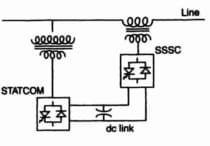 |
| Basic Electronics |
1. Schottky barrier diode can be used_________.
a. In clipping and clamping circuits
b. In communication receivers and radar units
c. As switching power supplies operating at frequencies of 20 GHz
d. All of the above
a. Low lever detector
b. Power supply rectifier
c. Variable capacitance device
d. Low noise amplifier
3. For harmonic generation, the diode that can be used is_______.
a. Varactor diode
b. Tunnel diode
c. P-N junction diode
d. Backward diode
4. Silicon diodes are less suited for low voltage rectifier operation________.
a. Its breakdown voltage is high
b. Its cut-in voltage is high
c. Its reverse saturation current is low
d. It cannot withstand high temperature
5. For constructing a full-wave rectifier__________.
a. At least two diodes are needed
b. More than two diodes are needed
c. At least four diodes are needed
6. The dc output polarity from a half-wave rectifier can be reversed by reversing_________.
a. The diode
b. The transformer secondary
c. The transformer primary
d. Both (b) and (c)
7. In a centre tap full wave rectifier, 100 V is the peak voltage between the centre tap and one of the secondary. What is the maximum voltage across the reverse biased diode ?
a. 86 V
b. 100 V
c. 141 V
d. 200 V
b. They need small transformer and also have less peak inverse voltage
c. They have less peak inverse voltage
c. A half wave rectified voltage
d. A 120 Hz voltage
10. The bridge rectifier is preferable to a full wave rectifier with centre tap connection because________.
a. It has higher safely factor
b. Its transformer has no centre tap
c. It needs much small transformer for the same output
d. It uses four diodes
e. Both (b) and (c)
c. 100 Hz
d. None of these
12. A single-phase diode bridge rectifier supplies a highly inductive load. The load current can be assumed to be ripple free. The ac supply side current waveform will be__________.
a. Square
b. Constant DC
c. Triangular
d. Sinusoidal
13. In a 3-phase half-wave rectifier if the input phase voltage is 200 V, the PIV required for each diode will be________.
a. 200 V
b. 346 V
c. 370 V
d. 400 V
14. What is the maximum output voltage of a 3-phase bridge rectifier supplied with line voltage of 440 V ?
a. 396 V
b. 528 V
c. 594 V
d. 616 V
15. The primary function of a filter is to_________.
a. Remove ripples from the
rectified output
b. Stabilise DC level of the output voltage
c. Suppress odd harmonics in the rectifier output
d. Minimise ac input variations
16. The function of bleeder resistor in a power supply is __________.
a. Same as that of a load resistor
b. To increase the output current
c. To increase the output dc voltage
d. To ensure a minimum current drain in the circuit
c. Larger the peak current in
the rectifying diode
d. All of the above
18. Choke input filter is a _________.
a. RMS detector
b. Peak detector
c. Average detector
d. Zero detector
c. Decreases
d. Increases
c. Decreases
d. None of these
a. A ramp
b. A spike
c. A triangular waveform
d. A pulse
22. A clipper circuit always________.
a. Clips both half cycles of input signal
b. Clips upper portion of input signal
c. Clips some part of the input signal
d. Needs a dc source
23. Without a dc source, a clipper acts like a__________.
a. Demodulator
b. Rectifier
c. Chopper
d. Clamper
24. The primary function of a clamper circuit is to_________.
a. Lower -ve half cycle of the signal
b. Raise +ve half cycle of the signal
c. Suppress variations in signal voltage
d. Introduce a dc level
into ac signal
a. Switching diode for
frequencies up to GHz range
b. Harmonic generator
c. Voltage regulator
d. Peak clipper
26. When a positive dc voltage is applied to the n-side relative to p-side, a diode is said to be given as___________.
a. Neutral bias
b. Zero bias
c. Reverse bias
d. Forward bias





0 Comments
If you have any doubt, feel free to ask.